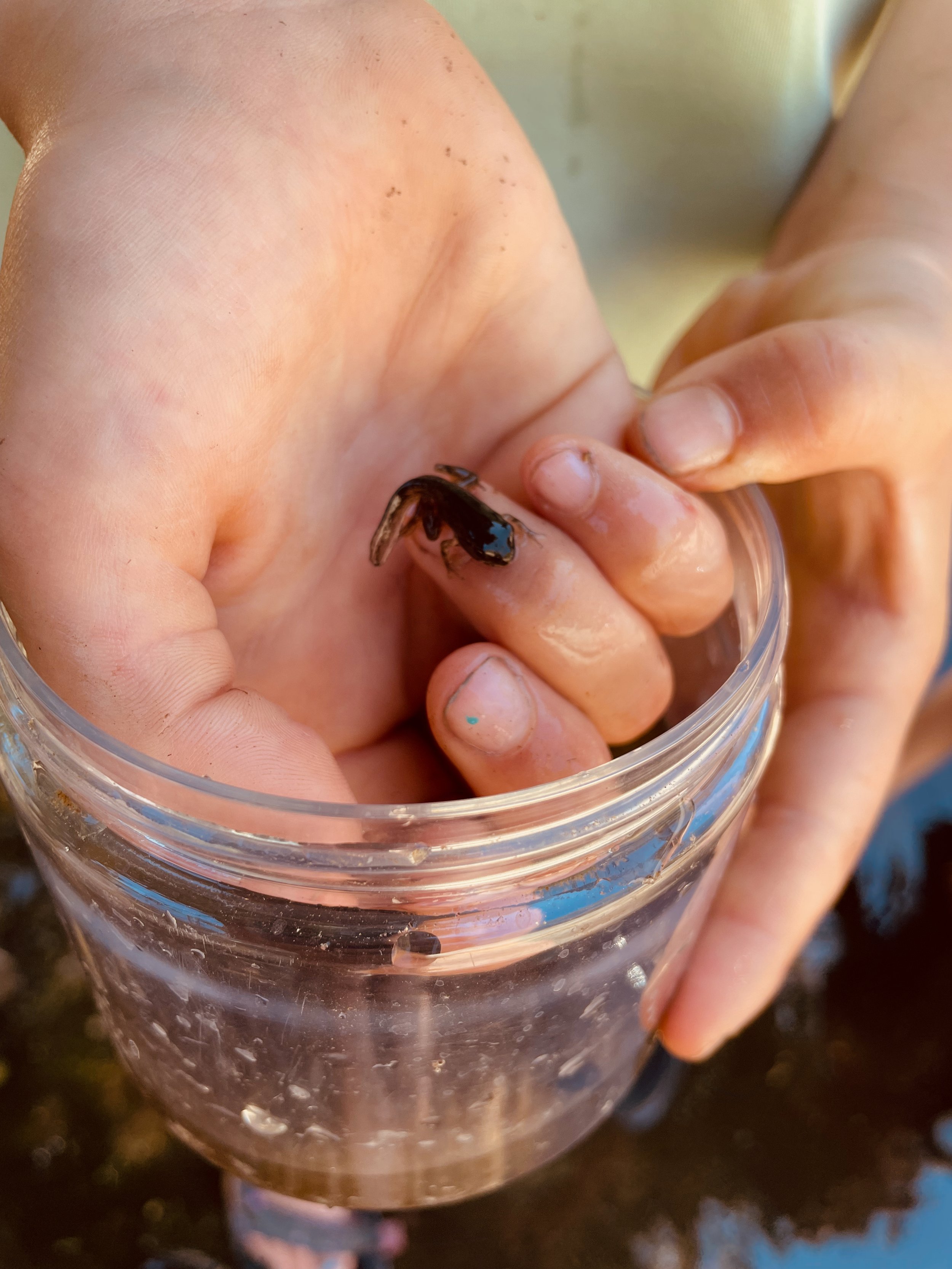
Environmental Education in Early and Middle Childhood
Wild Kin is run by mothers, naturalists, early childhood professionals, and educators with the goal of fostering a love for the outdoors while also teaching respectful stewardship of our wild spaces and the plants and animals that inhabit them.
What Happens at Forest School?
-

Nature Connection
Nature Connection is the container that holds our program. Magical interactions happen everyday when we notice the nest of Hummingbird, the slow crawl of Stinkbug on the trail, the fluffy catkins on Willow Tree.
-

Storytelling
storytelling is the backbone of our program. We use oral stories and folktales to teach lessons and connect children with their local plants, animals, and seasonal rhythms. We often see the stories we tell the children come alive in their play throughout the day!
-

Hiking and Exploring
An outdoor classroom offers ample space to run, climb, swing, and explore, challenging and supporting childrens natural development.
-

Sensory Awareness
Regular practice and modeling the use of all of our senses to promote physical awareness and presence in the world.
-

Wildcrafting
foraging + acorn processing, wild bead making, whittling, weaving, natural clays and more, support a deep connection to nature and promote creativity.
-

Wilderness Skills
Things like navigation, animal tracking, plant + animal ID, shelter building, friction fire, and more. These skills promote resilience, common sense, creativity and confidence outdoors.
-

Seasonal Rhythms
we experience all types of weather at forest school! We splash in puddles, dip our hands in mud, cool ourselves in creeks, and build rain shelters as needed!
-

Community
We forge bonds not just with each other, but with the plants and animals around us as. Our wild kin!
-

Free Play
Plenty of time to explore, splash, climb, and drop into make-believe games.

“Passion is lifted from the earth itself by the muddy hands of
the young; it travels along grass-stained sleeves to the heart.
If we are going to save environmentalism and the environment, we
must also save an endangered indicator species: the child in nature.”
--Richard Louv, author of Last Child in the Woods: Saving Our Children from Nature-Deficit Disorder
